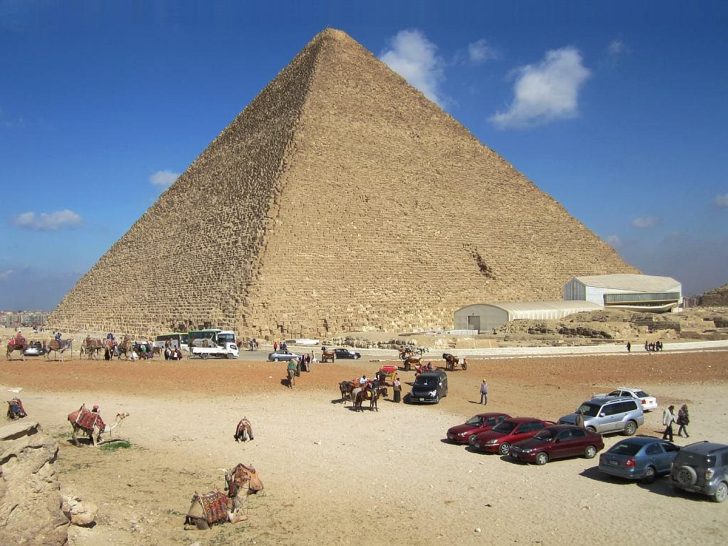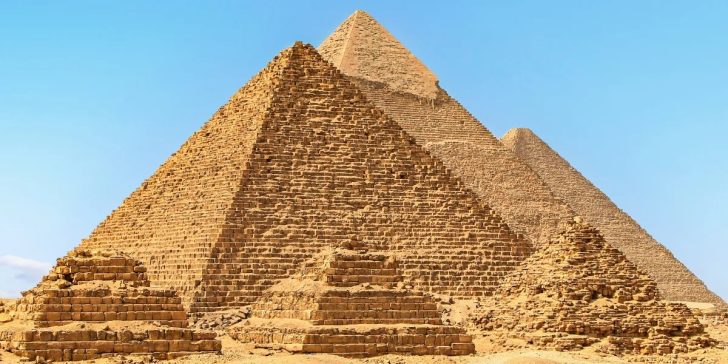The Giza Pyramids always seem to attract attention - not just from tourists, but from conspiracy theorists too. This week, the internet lit up with a new claim: Researchers supposedly found an underground city beneath the Pyramid of Khafre. Using radar tech, they say they uncovered tunnels, chambers, and even cube-shaped buildings hundreds of meters underground.
People were quick to jump on the story. Some said it was proof that ancient Egyptians had technology even more advanced than ours. Others claimed it was tied to lost civilizations or spiritual knowledge hidden from the public. Social media ran wild with it. But none of it adds up when you look closer.
A Press Conference with No Real Proof
The buzz started at a press conference in Bologna, Italy. Researchers showed off colorful charts and diagrams, claiming they had used something called Synthetic Aperture Radar (SAR) to map hidden structures beneath the Giza Pyramids. The drawings looked detailed and technical, giving the illusion of scientific proof.

GTN / The ‘researchers’ in question described five identical structures linked by geometric pathways. They claimed there were deep wells surrounded by spiral ramps and two giant cubes buried 648 meters below ground.
That is a bold claim! If true, it would be massive news. But the truth is, none of it holds water.
SAR Doesn’t Work Like That
Synthetic Aperture Radar is real, but it doesn’t work the way the researchers claimed. SAR can capture surface details or slight underground features, but it can't see hundreds of meters through solid rock and generate perfect images of buried buildings. That is pure science fiction.
Experts immediately flagged this. Egypt’s Ministry of Tourism and Antiquities said no such scans were done. The tech described wouldn't produce the kind of detailed maps the team showed. So how did they “see” a city that radar can’t possibly detect? Easy answer: They didn’t!
What Does the ‘Paper’ Behind the Claims Say?
The story goes back to a 2022 research paper published in Remote Sensing by Corrado Malanga and Filippo Biondi. They claimed to use radar to uncover hidden features inside the Great Pyramid. But no official excavation happened. No permits were granted. And no respected archeologist backed the claims.
The Egyptian government confirmed that no one used SAR equipment in or around the Giza Pyramids for this kind of project. That alone discredits the story. But it gets worse. The methods described are not accepted by the scientific community. The conclusions are based on shaky data at best or just pure imagination.

The News / Once the claims hit the internet, conspiracy theorists took over. Alex Jones called it “the greatest archeological find in history.”
Others said it was proof of an ancient power plant, or even a spiritual “city of Amenti” tied to mystical energy and lost wisdom. These ideas aren’t new. They just got a fresh coat of paint.
None of these theories come with real evidence. No artifacts, excavation reports, or confirmations from scientists who specialize in ancient Egypt.
The Real Story of Who Built the Giza Pyramids
For decades, people thought the Giza Pyramids were built by slaves. Some believed this because of the Bible. Others got the idea from Greek historian Herodotus, who said slaves built them around 450 B.C. But modern archeology has shown that is not true.
Archeologists found housing, tools, and food remains from worker villages near the pyramids. These workers were skilled, paid, and treated well. They worked in shifts and even had medical care. Some left graffiti on the walls, proudly naming their crews and bragging about their work. That is not how you treat slaves. It is how you manage professionals.
